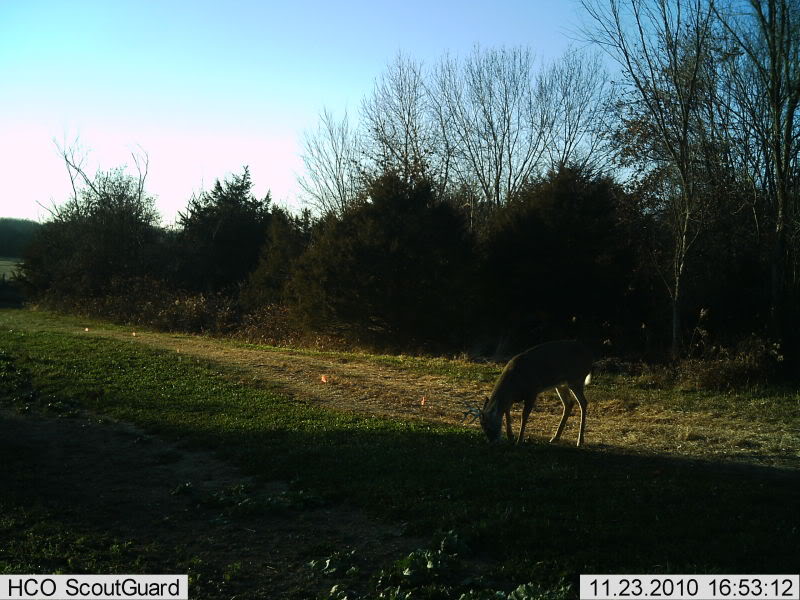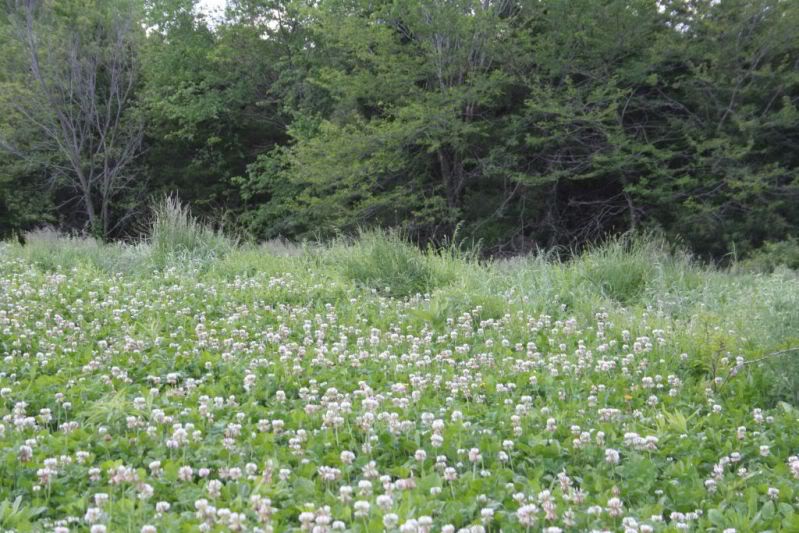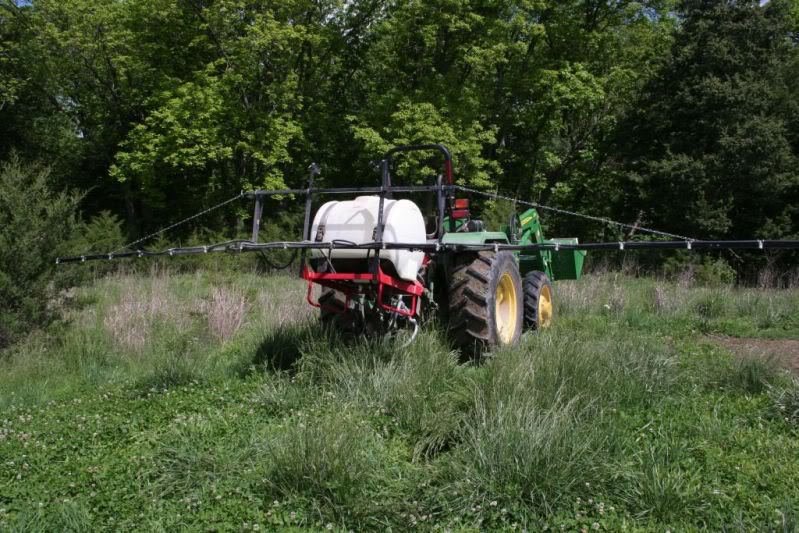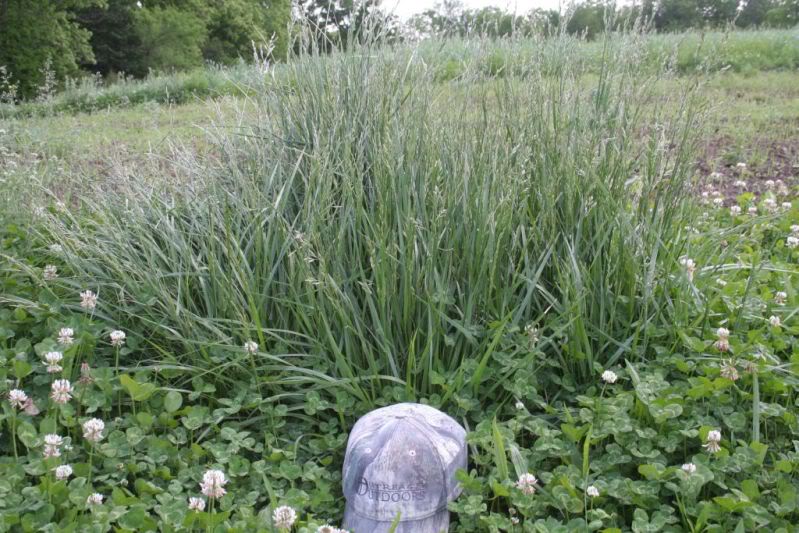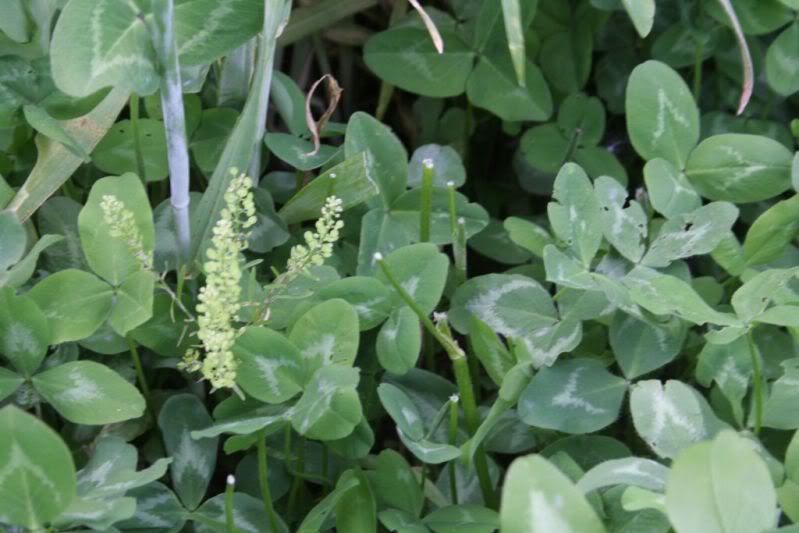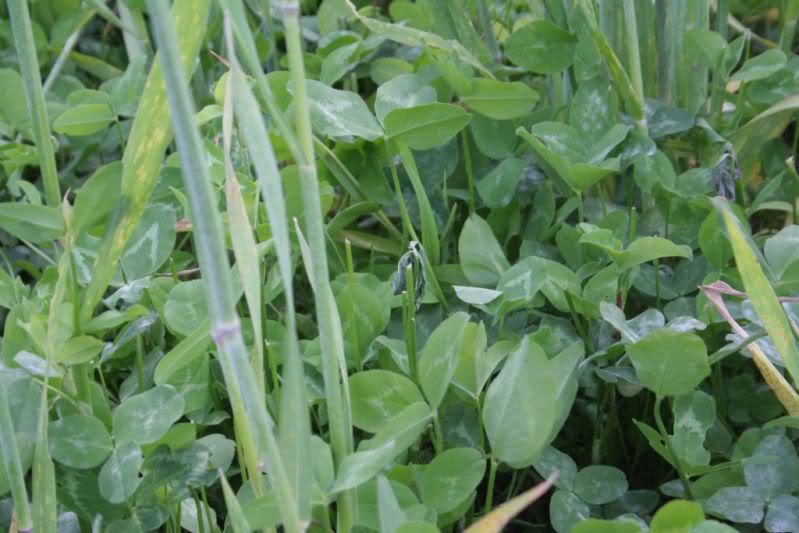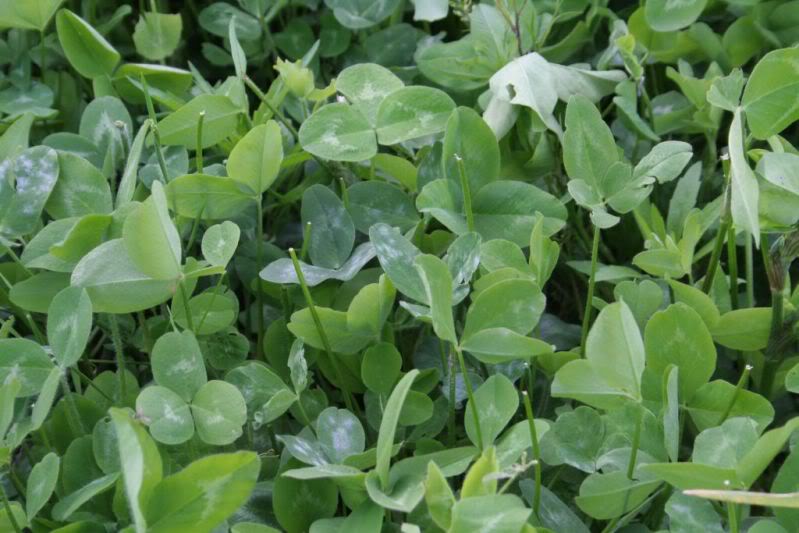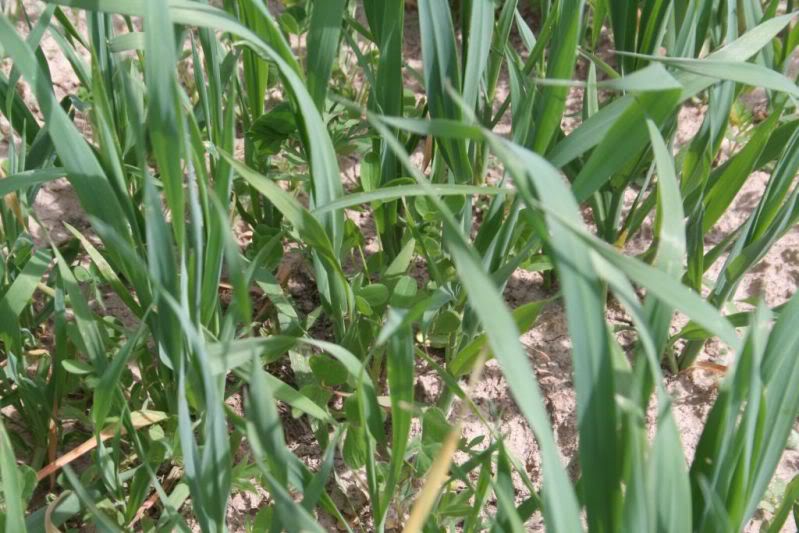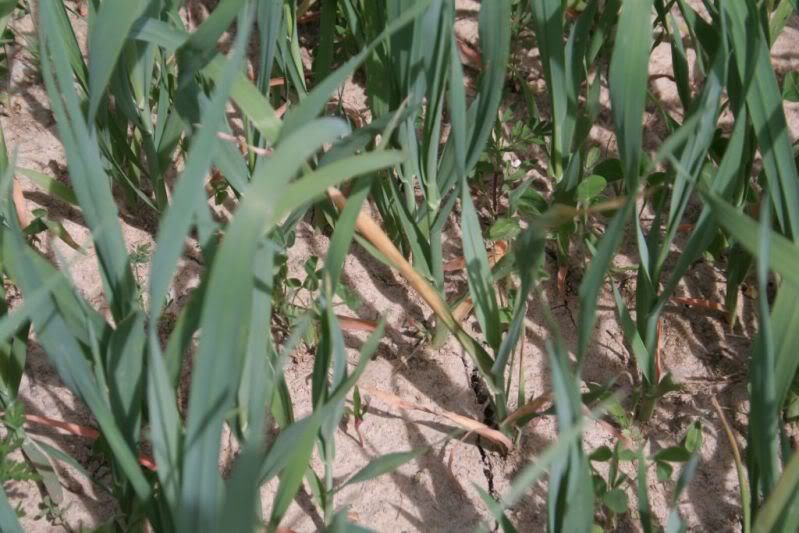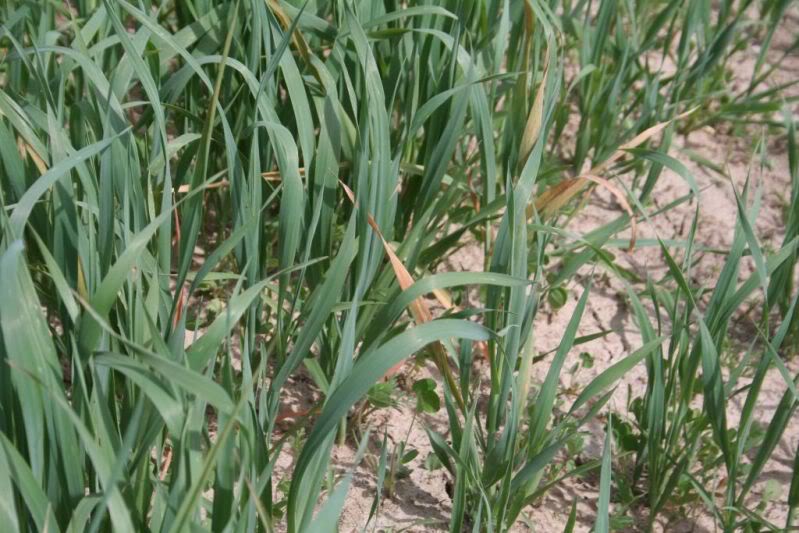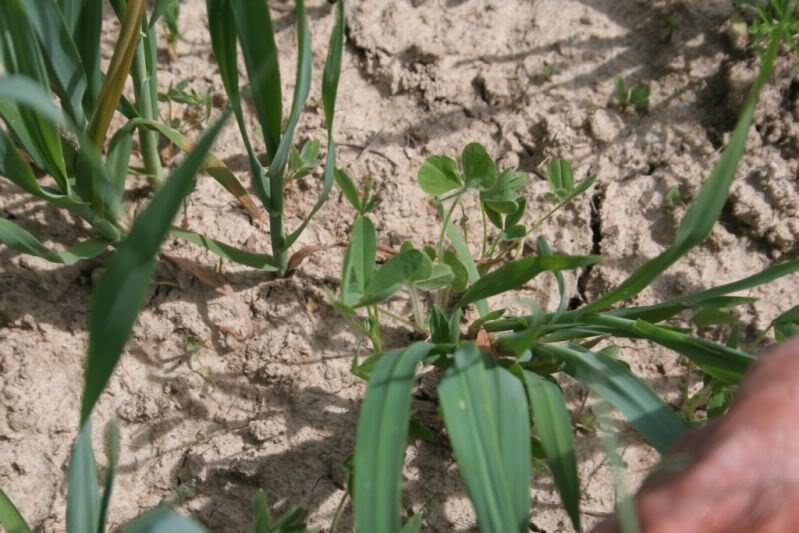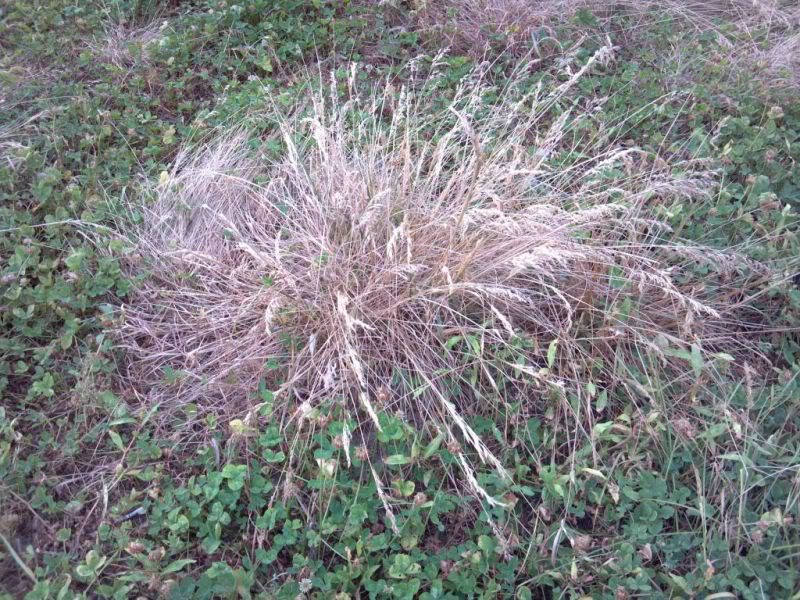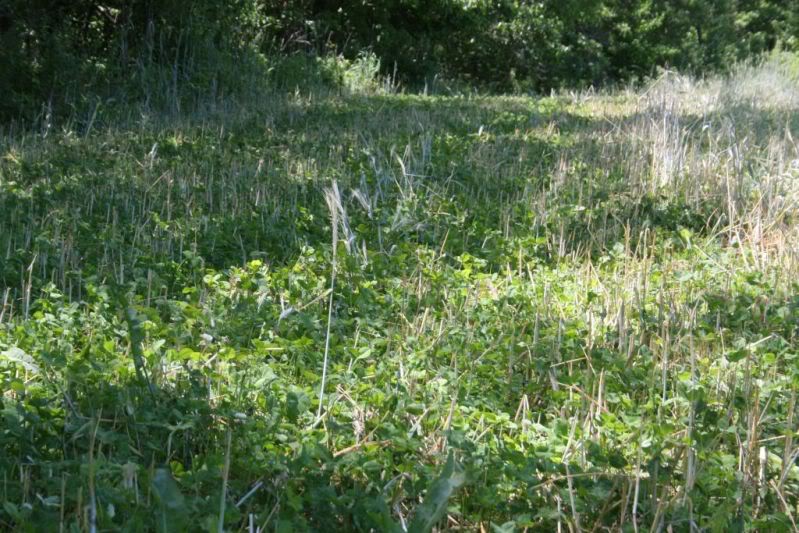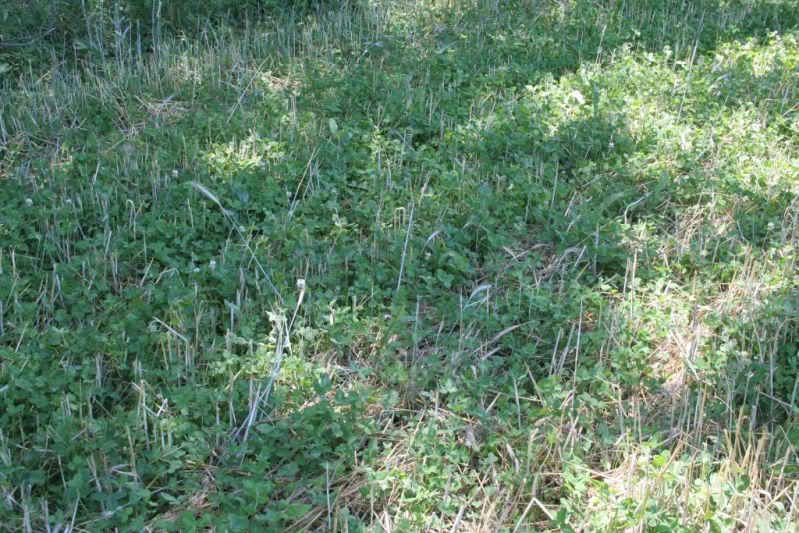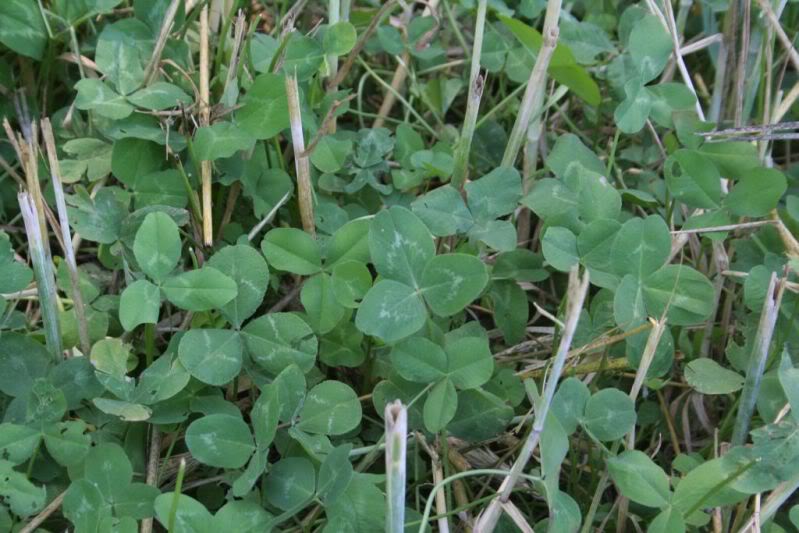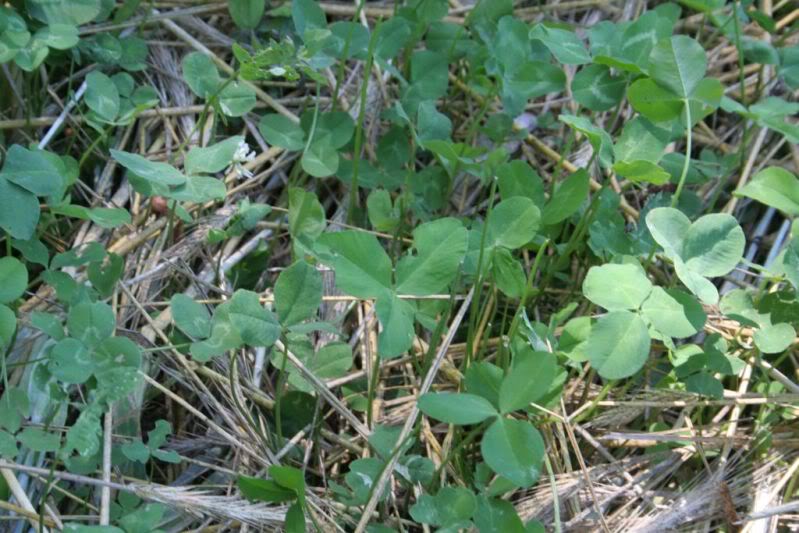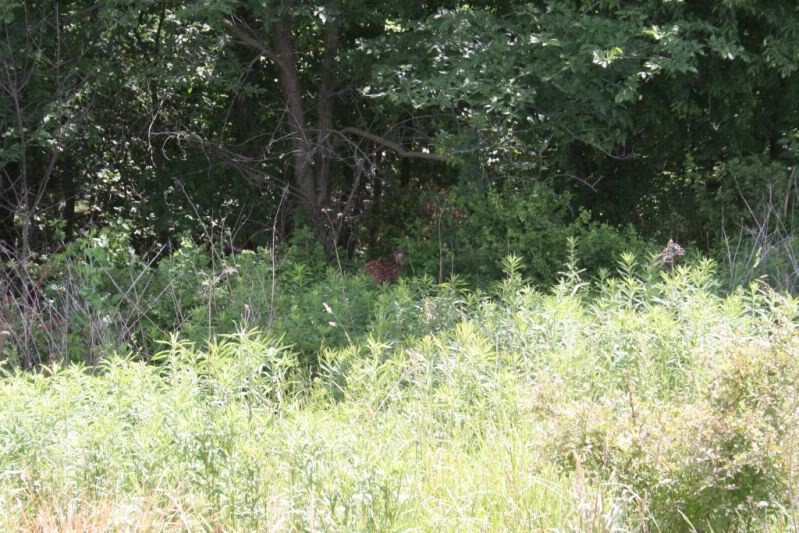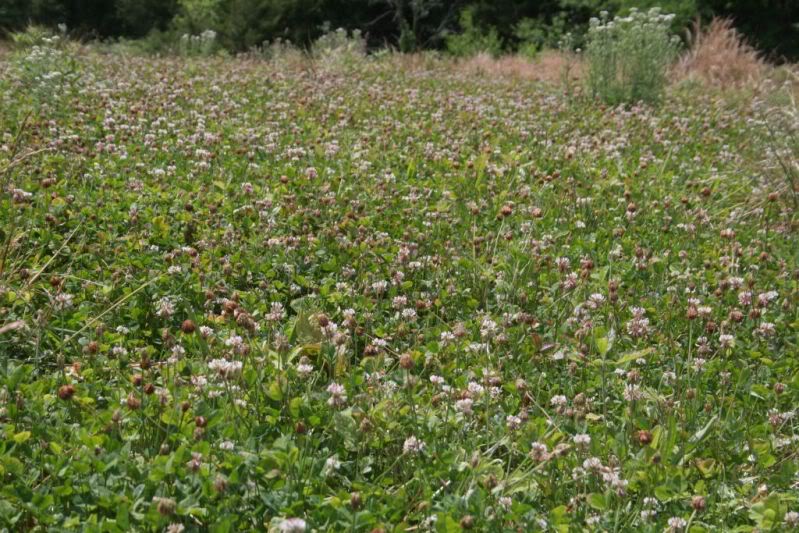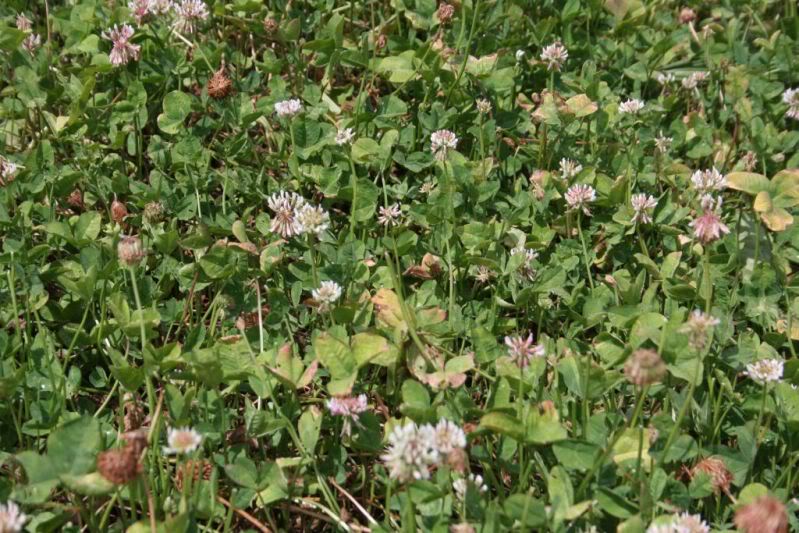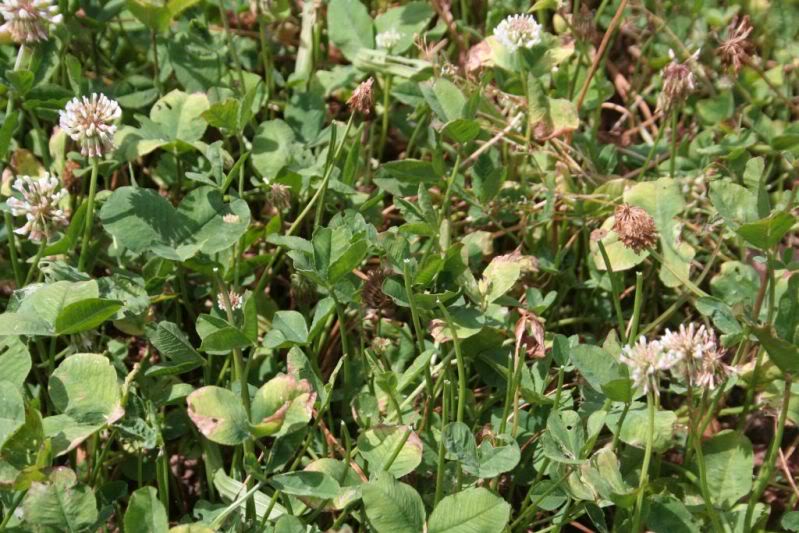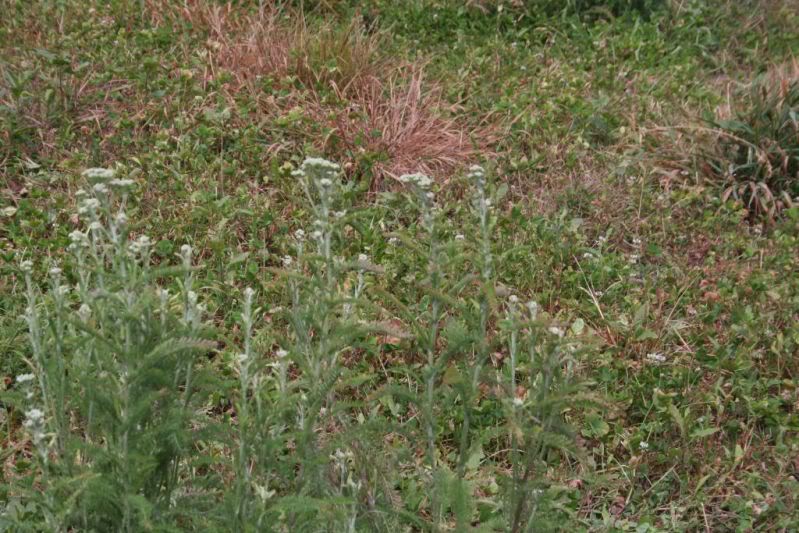June 2nd, 2012
White clover is bar none the most versatile and yet least expensive component we have available in our habitat tool chest and regardless of what crop types you choose to plant...I encourage you to plant a 20-40' wide strip around your feeding area or strips within the field, odd corners that are difficult to work, along the edge of a lane etc. White clover can feed deer for the longest period of time and having observed deer via cams on many farms in a number of counties now I can say white clover gets more attention then any other crop!
This is an example of where we established white clover for the first time around the perimeter of the field by planting it with the rye combo in late August...I clipped it in early May
before fawns were being born...
the mix of white and red clovers are doing outstandingly well!
The lush clovers are the first thing deer step into when the enter the field
and using clovers insures we can have year around food sources and thereby adapt deer to always, always coming to this field
While spraying herbicide with a BP sprayer yesterday I noticed a fawn in the shadows along the field edge
It's the first of June and I have been seeing fawns for 10 days now so late may thru mid June is a time when I avoid mowing/clipping if at all possible. The little fawns will not budge even for the roar of a tractor and brush cutter and leads to an early demise...so either spray or leave things alone from mid May to mid June.
Will deer eat clovers that are flowering?
You bet!
Deer continue to hammer our white clovers even though in full bloom!
White clovers can average 20-25% crude protein which is 5-10% more then any whitetail on the planet can utilize, it's very palatable and highly digestible and deer will feed on it from early April to mid winter!
I sprayed the clover with the following mix per acre
6-8 ounces 53% glyphosate
10-12 ounces clethodim
1 quart crop oil
which smoked all the grasses and
most weeds
Some are impervious to the light gly application so in this case I will clip them off before they go to seed
herbicides like Raptor will work on tough weeds in clovers but they are very expensive!
Raptor Herbicide
Butyrac 200 Herbicide (24DB Herbicide) is less expensive but also less effective on a smaller range of broadleaf weeds that usually need to be fairly small to get a good kill.
I have gotten along well for years using grass selective herbicides and mowing to control anything that survives that, along with crop rotations this has worked well for me...
Plant ALL in one plot in strips or blocks
Alice, KopuII, Durana (or comparable) white clover 10% of plot, in odd areas, corners or simply divide the plot with clover strips. Soil test for best results but 400#'s of 6-24-24 and 400#'s of pel lime will get most soils into shape. Plant 6-10#'s per acre
Brassicas in 45% of plot
Purple Top Turnips 3#
Dwarf Essex Rape 2#
GroundHog Forage radish 5#
Plant in mid to late July in most Midwest states, or 60-90 days before your first killing frost, use 400#'s 6-24-24 and 200#'s urea for best yields. Follow the dead brassicas with oats and berseem or crimson clover in mid spring.
Cereal Grain combo in 45% of plot
Winter rye 50-80#'s per acre (56#'s = a bushel)
Spring oats 80-120#'s per acre (32#'s = a bushel)
Austrian Winter Peas or 4010/6040 Forage peas 20-80#'s per acre
Red Clover 8-12#'s per acre or white clover at 6#'s per acre
Groundhog Forage Radish 5#'s per acre
Plant in late August to early September add 100-200#'s of urea if heavy grazing is expected.
Rotate the brassicas and rye combo each year


